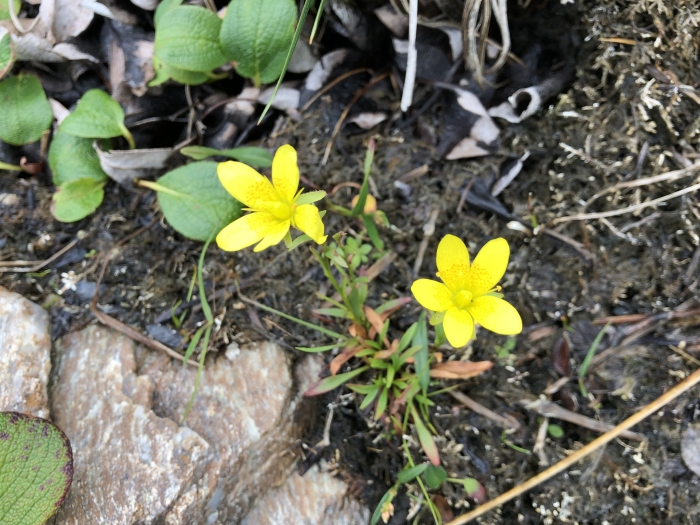Marsh Saxifrage
(Saxifraga hirculus)
Marsh Saxifrage (Saxifraga hirculus)
/
/

Jason Grant
CC BY 4.0
Image By:
Jason Grant
Recorded By:
Copyright:
CC BY 4.0
Copyright Notice:
Photo by: Jason Grant | License Type: CC BY 4.0 | License URL: http://creativecommons.org/licenses/by/4.0/ | Rights Holder: Jason Grant | Publisher: iNaturalist | Date Created: 2021-07-27T15:27:47-07:00 |
























Estimated Native Range
Summary
Saxifraga hirculus, commonly known as Marsh Saxifrage, is a perennial herb that is native to cool temperate regions of the Northern Hemisphere, including North America, Europe, and Asia. It is typically found in wet meadows, fens, and tundra environments, often in calcareous conditions. The plant grows 2-12 inches high and features distinctive yellow flowers with a red stem, blooming from June to August. The flowers are small but quite showy, attracting pollinators such as bees and butterflies. The foliage is generally a bright green, forming a low rosette at the base.
Marsh Saxifrage is appreciated for its bright, attractive flowers and is often used in bog gardens and other water-feature landscapes. It is also valued in traditional medicine for various remedies. In cultivation, it requires consistently moist or wet soil, preferably acidic to neutral, and it thrives in full sun to part shade. While it is not commonly found in nurseries, it can be grown from seed or division. Care should be taken to maintain the wet conditions it prefers, without letting it dry out. Potential problems include rot if the plant is too waterlogged and pest infestations from slugs and snails. It is not known to be invasive and does not have aggressive roots, making it a safe choice for sensitive wetland areas.CC BY-SA 4.0
Marsh Saxifrage is appreciated for its bright, attractive flowers and is often used in bog gardens and other water-feature landscapes. It is also valued in traditional medicine for various remedies. In cultivation, it requires consistently moist or wet soil, preferably acidic to neutral, and it thrives in full sun to part shade. While it is not commonly found in nurseries, it can be grown from seed or division. Care should be taken to maintain the wet conditions it prefers, without letting it dry out. Potential problems include rot if the plant is too waterlogged and pest infestations from slugs and snails. It is not known to be invasive and does not have aggressive roots, making it a safe choice for sensitive wetland areas.CC BY-SA 4.0
Plant Description
- Plant Type: Herb
- Height: 0.5-1.5 feet
- Width: 0.5-1.5 feet
- Growth Rate: Moderate
- Flower Color: Orange, Yellow
- Flowering Season: Summer
- Leaf Retention: Evergreen
Growth Requirements
- Sun: Full Sun, Part Shade
- Water: High
- Drainage: Slow
Common Uses
Bird Garden, Low Maintenance, Water Garden
Natural Habitat
Native to wet meadows, fens, and tundra environments, often in calcareous conditions
Other Names
Common Names: Marsh Saxifrage, Yellow Marsh Saxifrage
Scientific Names: , Saxifraga hirculus, Hirculus propinquus, Hirculus prorepens, Hirculus punctatus, Hirculus ranunculoides, Hirculus ranunculoides subsp. alpina, Kingstonia guttata, Leptasea alaskana, Leptasea hirculus
GBIF Accepted Name: